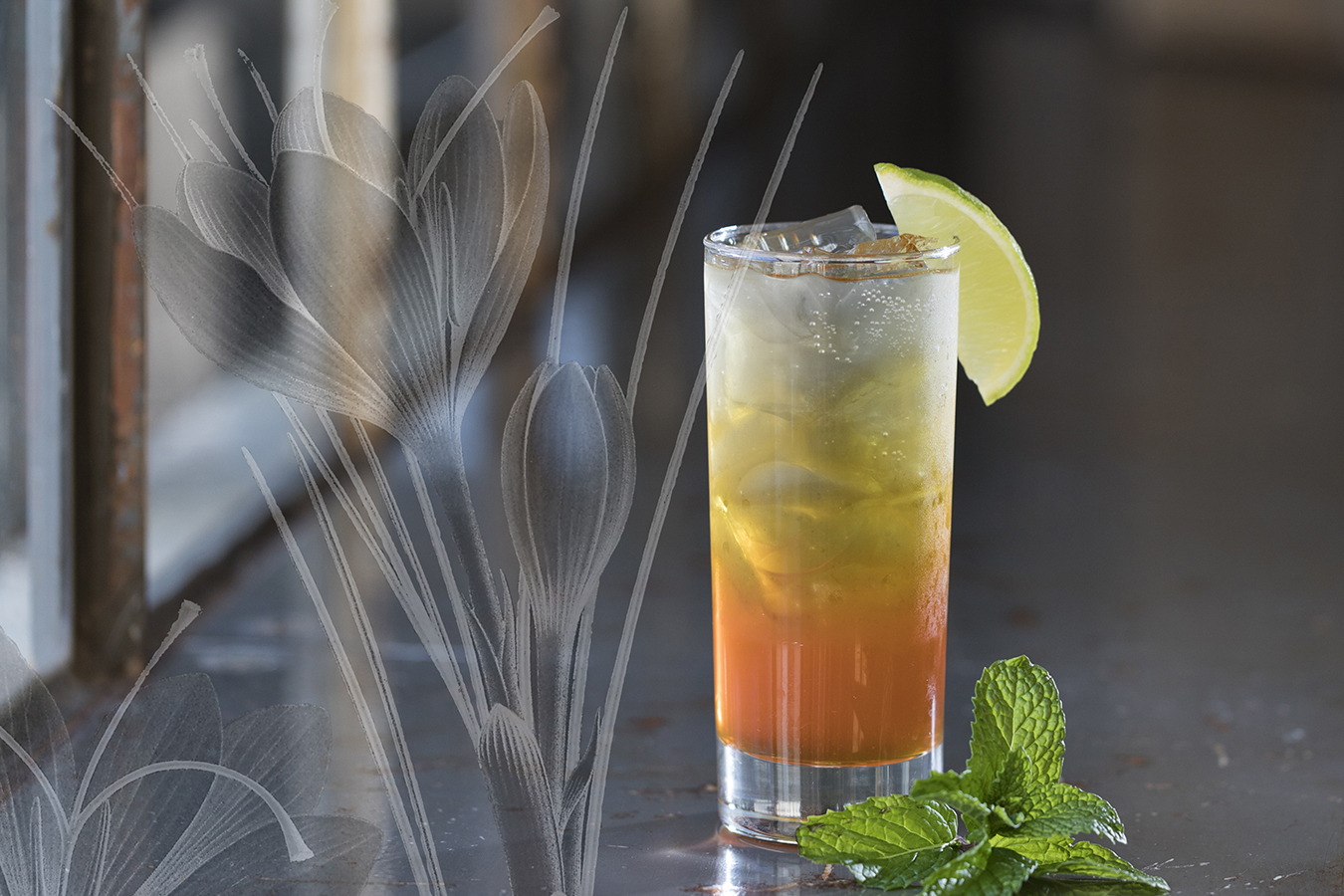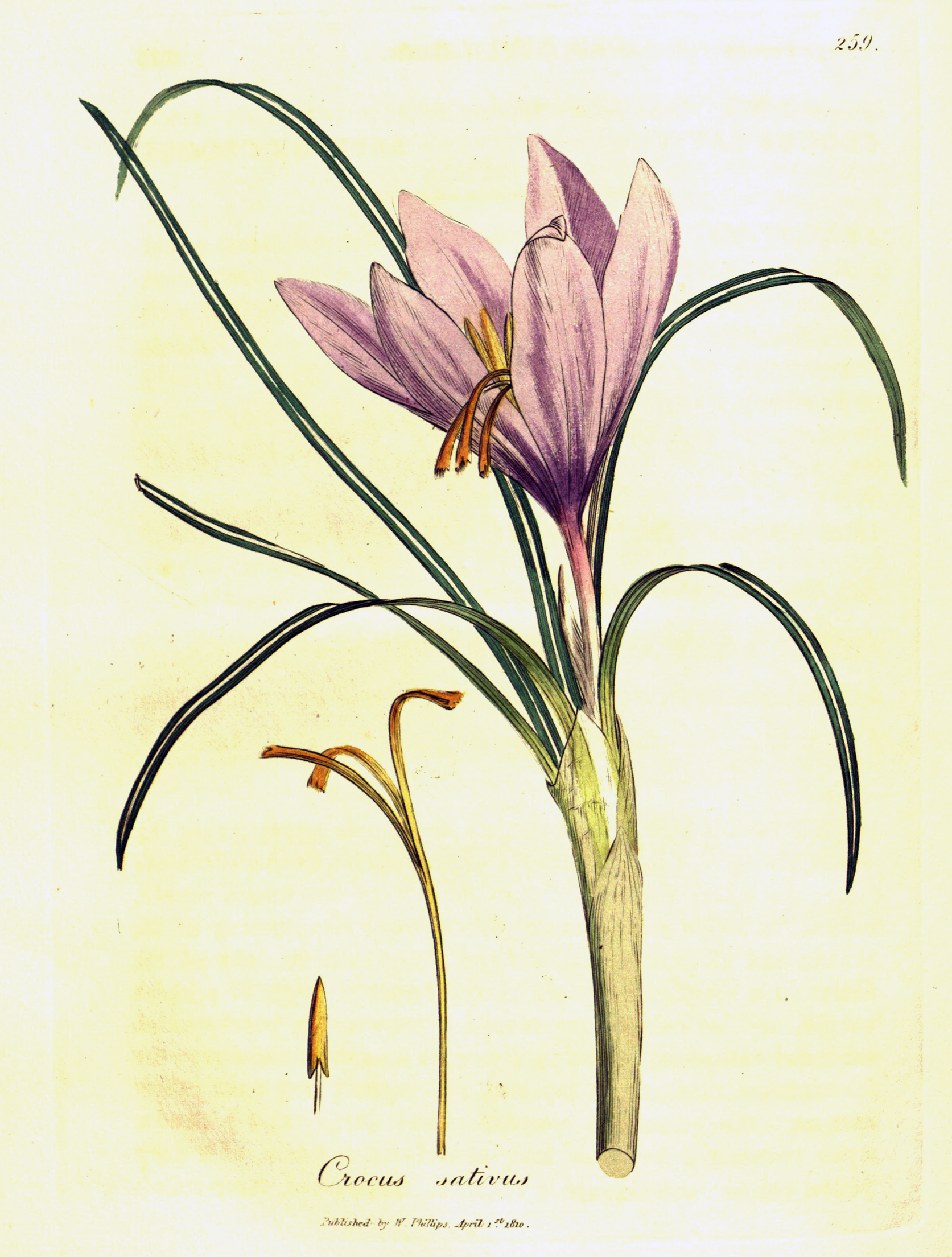
Saffron Bitters
Hair of the Dog, with Bugs & Bitters, Etc.

WHL
Bitters are made by infusing bitter botanicals in a high-proof base alcohol.1 Today they are a key flavoring component in cocktails; however, they first came into widespread use as medicinal aids. According to alcohol historian David Wondrich, when hungover Europeans started adding bitters to their wine and brandy as a restorative “hair of the dog” in the 1700s, they planted the seeds for the cocktails we enjoy today.2
True to form, this 1820 bitters recipe packs a medicinal punch. Notably, it features gentian root, an herb used for millennia to treat a variety of ailments that is proven to calm the stomach and help digestion (when consumed in moderation, so drink responsibly!). Gentian remains a key ingredient in Angostura bitters. 3

WHL
Saffron—made from the dried stigmas of the saffron crocus flower, a plant with origins in the Middle East—has also long been used to treat a range of ailments. An important source for yellow dye, saffron’s major contribution to this Wine Bitters is a pleasing, golden undertone. The dominant vibrant red color comes thanks to cochineal, a red dye formulated by the Aztecs and Maya of Central America from pulverized cochineal insects around 4,000 years ago. Today, cochineal is still widely used as a food and drink colorant, and it remains an important export for Peru; it is not, however, vegetarian.4 In 2006 Campari opted for artificial color in its iconic red bitters.5
For a low alcohol option, add this saffron bitters to tonic water—a quinine-infused refreshment once favored by Brits in colonial India for its antimalarial properties. Until synthetic quinine was developed in 1944, the natural version was derived from Peruvian cinchona bark; Europeans started importing cinchona bark for antimalarial medicines in the 1630s, after which it quickly took off.6 The Wangensteen Historical Library has an early manuscript example of an English recipe that uses cinchona against malaria: in 1659, Chris Dodssonn wrote in his copy of Nicholas Culpepers’ translation of the Pharmacopoeia Londinensis, “For your ague: Take 2 drams of Quin Quina or Jesuit’s Bark, beat it to a powder & infuse it in a draught of Clarit or white wine 2 hours & take it when your fitt begins & cetera.”7
Added to the mix is some mint syrup with origins in a Spanish-Morrocan medicinal recipe from the 1200s. Mint has been used for centuries (and still is!) to ease digestion.
WINE BITTERS: Historic Recipe Transcription 8
The rinds of 4 Oranges 1 drachm of Saffron 1 of Cochinell 1 ounce of Gentun root, put into 1 quart of Brandy and digested in the hottest sun 48 hours, then strain it and put half the quantity of Brandy on again and let it stand some time.
Tattersall’s Contemporary Interpretation
• 1.5 quarts of rum (Tattersall used rum instead of brandy for its punch of sugar)
• 4 orange rinds
• 3.7 grams of cochineal
• 3.7 grams of saffron
• 7 grams of dried gentian
Add dry ingredients to 1 quart of rum.
Steep in the sun for two days.
Strain out the dry ingredients with a cheesecloth.
Add remaining ½ quart of rum.
If desired, add honey to taste.
Tattersall Cocktail Recipe
• 1 ounce Saffron Infused Bitters
• ½ ounce mint syrup
• ¼ ounce lime juice
• High-quality tonic water
Fill an 8 ounce glass with ice cubes.
Add bitters, mint syrup, and lime juice.
Top with tonic water.
Garnish with lime wedge.
Notes
- Janet Rousa Fuller, “What are Bitters and How Should I Use Them?” Epicurious, July 7, 2016, https://www.epicurious.com/ingredients/what-are-bitters-and-how-to-use-them-cocktails-article. ↩
- Brad Thomas Parsons, Bitters: A Spirited History of a Classic Cure-all, with Cocktails, Recipes, and Formulas (Berkeley: Ten Speed Press, 20011), p. 9. ↩
- M. Carrie Allen, “One Weird Cocktail has Spread to Menus Worldwide. Because it Works,” The Washington Post, September 27, 2015, https://wapo.st/2qIYTbX. ↩
- Helen Soteriou and Will Smale, “Why you may have been eating insects your whole life,” BBC News, April 28, 2018, https://www.bbc.com/news/business-43786055. ↩
- Camper English, “Bug-Based Coloring Makes a Comeback in Spirits,” October 5, 2017, https://daily.sevenfifty.com/bug-based-coloring-makes-a-comeback-in-spirits/. ↩
- Juliet Burba, “Cinchona Bark,” University of Minnesota Libraries, Accessed November 13, 2018, https://www.lib.umn.edu/bell/tradeproducts/cinchonabark. ↩
- MS annotation in Nicholas Culpeper, Pharmacopoeia Londinensis: or, The London dispensatory further adorned by the studies and collections of the fellows, now living of the said colledg (London: Peter Cole, 1659): last endsheet rv. ↩
- Cookery and Medical Receipts, 1820. Manuscript. Wangensteen Historical Library of Biology and Medicine, University of Minnesota. ↩